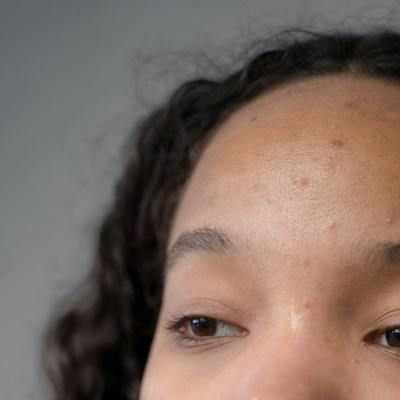Video
Case Study of a 23-Year-Old Female With Plaque Psoriasis
Author(s):
Transcript:
Mark Lebwohl, MD: Let me start out with an example of a 23-year-old female patient who has several thick scaly, well defined erythematous plagues, silver in color. They cover her elbows, thighs, part of the scalp, about 15% of the body surface area total.
She mentions having rashes in the past but nothing severe. She was started on apremilast but complained of GI [gastrointestinal] symptoms: nausea and diarrhea. What’s your initial impression of the case? And what are your goals of treatment? And would you recommend biologics as first-line therapy? James, you want to take that?
James Song, MD, FAAD: Yes, Mark. Just a couple of things that I would want to point out. First is this patient’s age. She’s 23, and I don’t want to overgeneralize here, but sometimes younger patients have a harder time being adherent to their treatment than some of my elderly patients, I would say. So maybe I would want to lean more toward a medicine that has less frequent injections or one that they come in for.
She’s a female of childbearing age. And whether she’s actively trying to get pregnant, I think if you look at the numbers, up to 50% of pregnancies are unplanned. We need to take that into consideration. Some biologics have better data than others for that.
She also had an extensive body surface area, and you can define severe however you want—15% is 15%, that’s bad. And she has scalp involvement. We have some studies showing that, especially for younger females, when you have scalp involvement, it can have a disproportionate effect on their quality of life. You could just have 1 plaque of psoriasis on their scalp and that might affect them more than 3, 4, 5 plaques on their trunk.
We also know that scalp involvement could increase their risk for arthritis, so I think that’s something we need to be mindful of. And she’s already been on apremilast, she’s not responding, and she’s having some tolerability issues. I would say no question, this patient is a candidate for a biologic therapy.
As far as goals of treatment, in a perfect world we could get all of our patients to PASI [Psoriasis Area and Severity Index scores of] 100, zero symptoms, zero impact on their life. Even with the highest agents, probably 50% is what we’re seeing, maybe a little bit higher with the new one that’s coming out. But if our goals are too ambitious, I feel that it’s not practical, and sometimes we could be overly aggressive if we’re trying to go for these ambitious goals.
I think it’s important that we have some set guidelines, that’s how you improve, right? You need to have quantifiable numbers. The National Psoriasis Foundation, they did put out come guidelines, which I’m sure all of you were a part of, recommending that at 3 months of treatments you want to get them to about 3% of body surface area or less. So that’s 3 palm prints. And in 6 months try to get them to 1 palm print or less.
I think those are attainable for a lot of our patients. But I would say at the end of the day it matters what affects the patient. I’ve had patients with minimal objective psoriasis, and it still bothers them a lot. You might want to escalate therapy for those patients. And conversely, you’ve had patients with maybe 3% to 5% on their trunk. It’s covered with their shirts. They don’t care, it impacts them zero. Then maybe you don’t have to escalate therapy for that patient. I think it’s really important to have an open dialogue with your patient.
As far as treatment considerations, I think we touched on this already, but comorbidities I think are the most important thing. Do they have a comorbidity where you would not want to use a certain biologic, or do to have one where you would want to use a biologic. I think psoriatic arthritis is a common example of that.
For this patient I don’t really see anything other than the fact that she is a woman of childbearing age, and so I would say that might make me consider one agent over another. But as far as how I stratify my patients for treatment, I think the 2 big groups are biologically naïve patients, so they’ve been on a biologic before, and then the biologically experienced. I would say my conversation does change a little bit depending on that.
So if a patient has been biologically experienced, they failed multiple systemic and biologic agents, I focus more on efficacy and speed because those patients have been burned, and unfortunately they’ve been disappointed so many times, I’m worried that if I don’t get this right the first time, I’m going to lose them. Maybe they’re not going to come back or they’re not going to be compliant. I focus more on efficacy. For my naïve patients, some of them are afraid of needles. And I may focus more on safety, and I also may prefer an agent with less frequent injections, and I bring them in every 12 weeks.
Mark Lebwohl, MD: OK. Any other comments on this case?
Leon Kircik, MD: I think James covered it really well.
Mark Lebwohl, MD: I agree, nice job. The pregnancy issue for a 23-year-old I certainly would agree with. It’s interesting, females with extensive psoriasis, especially involving the scalp, I find to be quite compliant because they want to get rid of that psoriasis.
One of the things that came out of your talk was, the next thing you would do is you would ask them, “Do you have psoriatic arthritis? Do you have joint pain?” And that would probably influence the treatment we would select for them.
Transcript Edited for Clarity

Study Compares ChatGPT-4 Diagnostic Abilities to Teledermatologists




